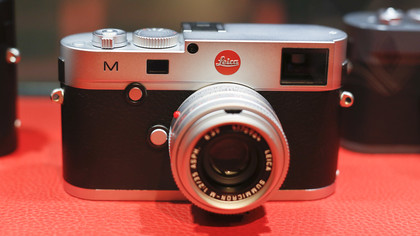Why you can trust TechRadar
There isn't too much to question regarding the standard of build of the Leica M 240 – as there isn't about any of the M models. Leica prides itself on the solidity of its cameras, and unsurprisingly the top and bottom plates of the M are milled from solid blocks of brass, and the body is made around a cast magnesium alloy shell.
Most manufacturers use magnesium alloys for their lightweight properties, as well as their strength, but in the M that characteristic is somewhat lost in the mass of the other body parts. This is a heavy camera that weighs 680g - married with the moderate dimensions of the body it feels as though it has the density of Cluedo's murderous lead piping.
As has become the norm for the style of Leica M bodies (though notably not for the new T) the M 240 has no discernable handgrip, which makes a strap absolutely essential for the hand-creamed photographer. A concession has been made on the rear of the body, with a new control wheel mounted in a ramp-shaped thumb support. This is some comfort, but for this test I used a wrist strap the whole time.

A significant alteration of handling comes in the form of a dedicated exposure compensation button on the front of the camera's body. This is significant because I can't remember Leica ever providing one before, and because for the way I work this this one of the most important features of a camera.
The button is buried in a protective ring to prevent accidental activation, but combined with the soft doughy press of the button it isn't always plain sailing getting the feature alive. There is a minor delay in the screen indicators coming on that was just long enough to make me think nothing was happening. It is great to have the button though, once you are used to the way it responds.
I'm glad to say that all other controls, and screen activities, are fast and responsive in this model, and the delays and low resolution views of the past are banished. Images appear on the rear screen quickly, and at no time was I held back in shooting while the camera processed the last image.
Although the menu is divided into five logical groups there's no way to navigate from one group to another without scrolling through all the options – despite there being plenty of buttons that could make this happen. The menu is clear enough though, and the new thumb wheel makes shifting up and down much faster than before.
Some might think the idea of red guide lines in the viewfinder a little crude, and they might be right, but I loved them and once switched from white they never changed back. They just made seeing what was in and out of the frame so much easier, especially with my 90mm lens.
The 90mm of course suited working in Live View mode very well, and I was quite impressed at the lack of delay in capture with Live View in action. It isn't as fast as a traditional mirrorless camera, but somewhat faster than a DSLR.